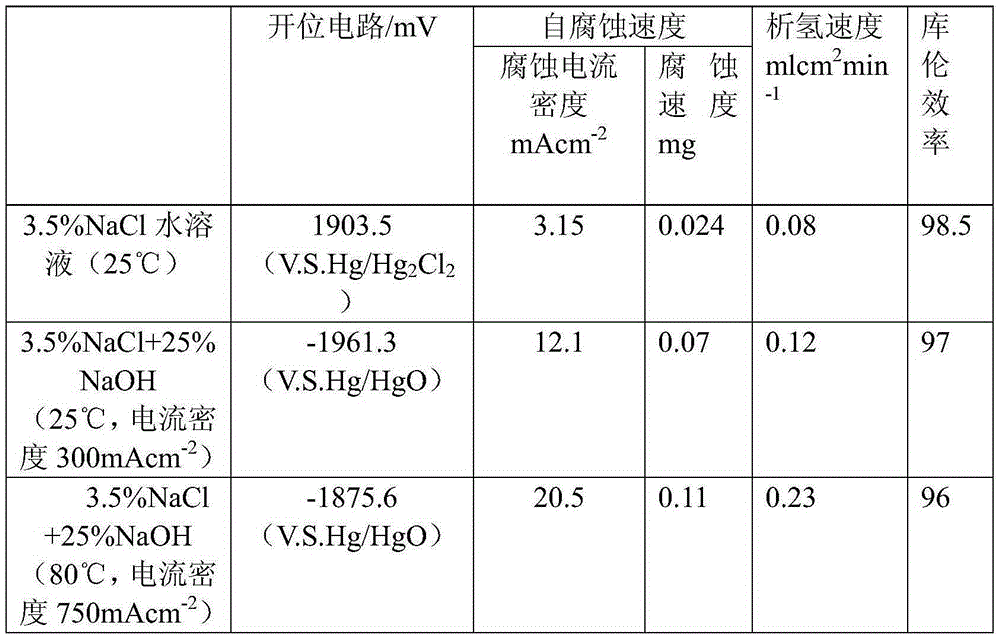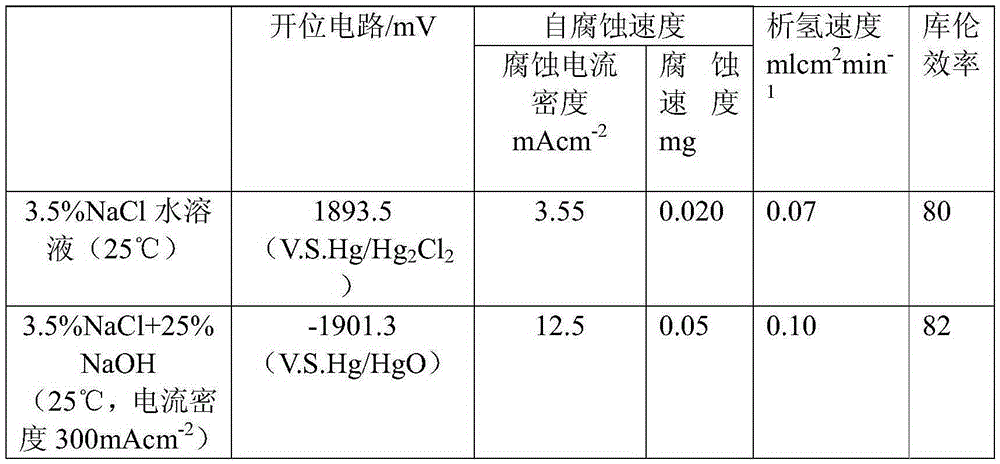Aluminum-alloy anode material for battery and preparation method of aluminum-alloy anode material
An anode material and manufacturing method technology, applied in battery electrodes, circuits, electrical components, etc., can solve problems such as poor open circuit voltage and corrosion resistance, limited application, etc. The effect of chemical polarization
- Summary
- Abstract
- Description
- Claims
- Application Information
AI Technical Summary
Problems solved by technology
Method used
Image
Examples
Embodiment 1
[0041] According to the composition of Example 1 mass percentage in Table 1, the aluminum ingot is first added to the graphite crucible and melted in a resistance furnace. After melting, fully stir with a graphite rod to obtain aluminum alloy liquid; add hexachloroethane to the aluminum alloy liquid to remove slag, and pass in argon to degas. minute. After degassing and slag removal, let stand for 1-5 minutes, and cast into flat ingots.
[0042] The cast flat ingot was uniformly annealed at a temperature of 550°C for 120 minutes, water-cooled, face milled and then cold-rolled at a temperature of 200°C to a finished aluminum alloy anode material with a thickness of 0.5mm.
Embodiment 2
[0044] According to the composition of Example 2 in Table 1 by mass percentage, the aluminum ingot is first added to the graphite crucible and melted in a resistance furnace. After melting, fully stir with a graphite rod to obtain aluminum alloy liquid; add hexachloroethane to the aluminum alloy liquid to remove slag, and pass in argon gas for degassing. minute. After degassing and slag removal, let stand for 1-5 minutes, and cast into flat ingots.
[0045] The cast flat ingot was uniformly annealed at a temperature of 560°C for 60 minutes, water-cooled, and after face milling, the aluminum alloy flat ingot was cold-rolled at a temperature of 180°C to a finished aluminum alloy anode material with a thickness of 0.6mm.
Embodiment 3
[0047] According to the composition of Example 3 in Table 1 by mass percentage, the aluminum ingot is first added to the graphite crucible and melted in a resistance furnace. After melting, fully stir with a graphite rod to obtain aluminum alloy liquid; add hexachloroethane to the aluminum alloy liquid to remove slag, and pass in argon gas for degassing. The gauge pressure of argon gas is 0.2 MPa, and the ventilation time is 3-5 minute. After degassing and slag removal, let stand for 1-5 minutes, and cast into flat ingots.
[0048] The cast flat ingot was homogenized and annealed for 180 minutes at a temperature of 530°C, water-cooled, and after face milling, the aluminum alloy flat ingot was cold-rolled at a temperature of 220°C to a finished aluminum alloy anode material with a thickness of 0.4mm.
PUM
 Login to View More
Login to View More Abstract
Description
Claims
Application Information
 Login to View More
Login to View More - R&D
- Intellectual Property
- Life Sciences
- Materials
- Tech Scout
- Unparalleled Data Quality
- Higher Quality Content
- 60% Fewer Hallucinations
Browse by: Latest US Patents, China's latest patents, Technical Efficacy Thesaurus, Application Domain, Technology Topic, Popular Technical Reports.
© 2025 PatSnap. All rights reserved.Legal|Privacy policy|Modern Slavery Act Transparency Statement|Sitemap|About US| Contact US: help@patsnap.com



